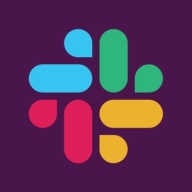

Find out in this report how the two Enterprise Content Management solutions compare in terms of features, pricing, service and support, easy of deployment, and ROI.
There is a lack of detailed and timely responses, and support is not always transparent with the solutions.
The quality of Microsoft's technical support is very high.
It's also difficult sometimes to get the right information because we speak at first to a generalist and they have to go to a specialist.
We tend to focus more on Workato for support, but internally we raise service requests with the infrastructure team for any issues related to Slack.
Making it easy to scale from a load-balancing and infrastructure perspective.
SharePoint is massively scalable and I would rate it as 8.5 out of ten.
SharePoint allows multiple teams to work at the same time, making it adaptable for large data volumes.
Slack is endlessly scalable.
Slack is not as comprehensive as Microsoft Teams in terms of scheduling and hosting meetings.
A user who engages with Slack daily and utilizes various features would provide more valuable insights.
The stability of SharePoint is high; it is quite stable and resilient.
Everything runs smoothly, and I have no problems with its stability.
SharePoint is a stable product.
It integrates with various systems, allowing us to manage site reliability, availability, and reliability.
Slack's stability is a perfect 10.
Occasionally, Slack behaves unexpectedly and shuts down, which can be irritating, especially when I am in the middle of a task.
Microsoft forces users to upgrade their license to access proper auditing information, which is essential and should be included in any license.
The rights management aspect can be particularly challenging, which may affect the overall user-friendliness of the product.
Expansion of scalability is needed, specifically the threshold limits for site items should be increased beyond the current 5,000 items.
We can also improve the creation of channels, particularly in terms of privacy, security, flexibility, and the addition of members to newly created channels.
Configuring chats and pinning in Teams is easier, even though Slack has these features, they are not intuitive enough to engage with.
There is a need to add a call group feature to facilitate scheduling and conducting meetings within Slack.
Unlike Drupal, all necessary applications are included in the Microsoft license, making it cost-effective.
Microsoft offers bundled pricing for Office, SharePoint, and Exchange, making it cost-effective.
Enterprise licensing is generally cost-effective compared to individual purchases.
Additionally, SharePoint acts as a version control system, allowing easy recovery of past document versions.
Its rights management capabilities and ability to restrict access to certain people are also very useful.
The most valuable feature of SharePoint is the ability to collaborate on documents without having multiple versions.
In my experience, Slack is a stable product for communication, and I appreciate its automation features and integration of AI capabilities for enhancing specific functions.
In managing releases via Slack channels, one major advantage over Teams is the ability to have threaded discussions, which helps in catching up on relevant discussions without the distraction of interleaved conversations.
The integration with Google Calendar is easy to use and allows us to receive notifications before meetings.
| Product | Market Share (%) |
|---|---|
| SharePoint | 15.0% |
| OpenText Documentum Content Management | 10.2% |
| OpenText Content Management | 10.0% |
| Other | 64.8% |
| Product | Market Share (%) |
|---|---|
| Slack Business - Enterprise | 15.8% |
| Microsoft Teams | 14.0% |
| Atlassian Confluence | 8.9% |
| Other | 61.3% |


| Company Size | Count |
|---|---|
| Small Business | 79 |
| Midsize Enterprise | 37 |
| Large Enterprise | 80 |
| Company Size | Count |
|---|---|
| Small Business | 54 |
| Midsize Enterprise | 13 |
| Large Enterprise | 21 |
SharePoint is a Microsoft-based platform for building web applications. It covers a widerange of capabilities and while it is appropriate for experienced webdevelopers, even non-technical minded users can easily navigate through thesystem and execute functions such as collaborating data, managing documents andfiles, creating websites, managing social networking solutions, and automatingworkflow.
Major areas that SharePoint deals with are websites,communities, content, search, insights, and composites. The purpose is to give usersthe ability to create or develop these key business components on their owneven without technical knowledge of, for example, how to build a website or howto integrate coding. Configuring SharePoint into a business's system is meantto cut out all of the complicated steps, and pave the way for easierimplementation all around.
Slack Business - Enterprise facilitates team communication and collaboration with integration capabilities and a user-friendly interface, supporting mobile and web platforms. It enhances productivity through efficient organization, instant communication, and extensive customization options.
Designed for seamless integration with apps and services, Slack Business - Enterprise provides efficient organization through channels and threads, instant communication, file sharing, and video calls. Productivity is boosted via notifications, reminders, bots, and automation. Customization enhances the user experience, promoting collaboration. However, improvement areas include video chat, meeting functions, and third-party tool integration. Users prioritize enhanced UI, security, and document collaboration, alongside better scalability, stability, and attachment browsing capabilities.
What are the key features of Slack Business - Enterprise?Slack Business - Enterprise is widely used across various industries, serving as a communication hub within organizations. Its features support internal and external communication, project management, and workflow optimization. Industries benefit from its integration with Google Drive and Zoom, enabling efficient collaboration and streamlined operations.
We monitor all Enterprise Content Management reviews to prevent fraudulent reviews and keep review quality high. We do not post reviews by company employees or direct competitors. We validate each review for authenticity via cross-reference with LinkedIn, and personal follow-up with the reviewer when necessary.